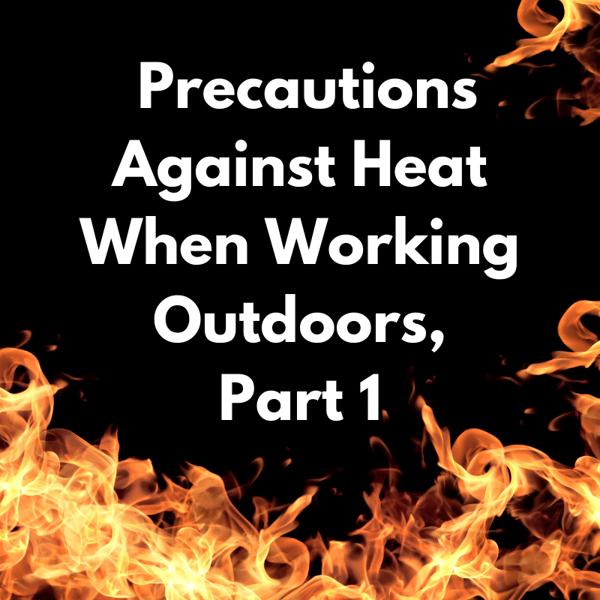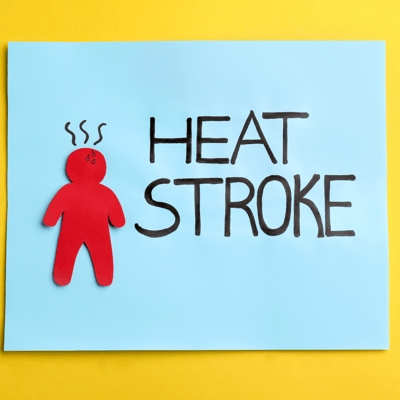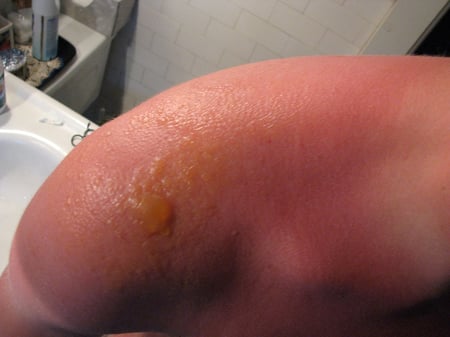Our body works hard to keep itself at about 98.6 F. When exposed to heat for long periods, it will start experiencing complications.

Many years ago, my brother-in-law worked for the water department in a small city here in Texas. James was a tough guy, used to working in the heat. One day, however, he overheated and suffered a heat stroke. My sister, also working for the city then, told us they’d stripped him to his underwear and poured ice and water over him after placing him in the bed of one of the city trucks. And let me clarify by saying that the truck bed was lined, so they didn’t add any skin burns to the heat stroke.
Fortunately, James recovered quickly -- thanks to his co-workers noticing that something had gone wrong. This Shop Talk Blog post will discuss common heat-related illnesses, including how to spot them and what to do about them.
Dehydration
Dehydration happens when your body loses more fluid than it takes in, which can upset the balance of minerals (e.g., salts and sugars) and affect how it functions. Symptoms include
- Extreme thirst
- Don’t urinate often, and when you do, you don’t pass much
- Your urine is dark yellow and strong smelling
- You feel dizzy or lightheaded
- You feel unusually exhausted
- You feel confused
The best treatment for dehydration is to drink water, sports drinks, or electrolyte drinks -- and try to find a cool spot to do so.
Heat Stroke
Heat stroke is considered the most serious heat-related disorder. It occurs when the body can’t regulate its temperature anymore. The body's temperature rises rapidly -- up to 106°F or higher within 10 to 15 minutes -- and without immediate medical attention, it can lead to permanent disability or death -- this is one heat-related illness to take very, very seriously.
Here are the symptoms to watch out for:
- They have a very high body temperature
- Their skin is either hot and dry, or they’re profusely sweating
- They’re experiencing confusion, an altered mental status, and slurred speech
- They’ve lost consciousness (e.g., coma)
- They’re having seizures

The first thing to do when someone experiences the symptoms of heat stroke is to call 911 for emergency care. Here are the additional first aid steps, according to the National Institute for Occupational Safety and Health (NIOSH):
- Stay with them until emergency medical services arrive
- Move them to a cool, shaded area and remove their outer clothing
- Cool them down quickly using any of the following methods you can:
- Put them in cold water or an ice bath
- Wetting their skin with water
- Placing cold, wet cloths on their skin
- Soak their remaining clothing down with cool water
- Place cold, wet cloths or ice on the head, neck, armpits, or groin to speed up cooling
- Circulate the air around them to speed up the cooling process
Heat Exhaustion
Heat exhaustion is also the result of your body overheating. If left untreated, it can lead to heatstroke. Here’s what to look for:
- They’re experiencing heavy sweating
- They’re complaining of weakness or fatigue and may be more irritable than normal
- They’re complaining of nausea or vomiting
- They’re dizzy or have fainted
- They’ve got a headache ranging from a mild one to a throbbing one
- Their skin is cool and moist -- despite being too hot-- and they may have goosebumps
- They may also have some of the symptoms of dehydration

If you can’t get them to a clinic or emergency room (or until you can), here’s what NIOSH recommends:
- Get them out of the heat and give them some liquids to sip
- Get them to remove unnecessary clothing, including shoes and socks
- Help them cool down with cold compresses or have them wash their head, face, and neck with cold water (pouring it over their head works, too)
And don’t forget: untreated heat exhaustion will lead to heat stroke.
Heat Cramps
Heat cramps are painful muscle spasms resulting from losing large amounts of salt and water through sweating. They can be one of the symptoms of heat exhaustion but aren’t always associated with it. Heat cramps usually occur in the arms, legs, or abdomen and can be pain, spasms, or muscle cramps.
The best treatment for heat cramps is to drink water and have a snack (or a drink) that can help replace your electrolytes every 15 to twenty minutes. Some people swear by pickle juice. However, if you’re on a low-sodium diet or have heart problems, you need medical help. And if your cramps are still going after an hour, get medical help.
Heat Syncope

Also known as heat fainting, heat syncope happens when your blood pressure takes a sudden, temporary drop. It usually occurs when you stand up from sitting too long or lying down, especially if you get up suddenly. And dehydration can be one of the contributing factors.
If it happens to you, find a cool, shaded place to sit (or lie) down. Then start slowly drinking water, a sports drink, or clear juice -- and the same is true if you see it happen to a co-worker.
Heat Rash
Heat rash is a skin irritation caused by excessive sweating. It can occur at any age but is most common in young children. It will look like a cluster of small blisters or red pimples. It usually appears on the neck and upper chest, in the groin, under the breasts, and in elbow creases.
The best treatment is to keep the rash area dry. You can use powders to help but don’t use creams and ointments -- they can trap the heat and make the rash worse.
Sunburn
Overexposure to the sun's ultraviolet (UV) radiation can cause damage to the skin, resulting in redness, pain, and swelling, commonly known as sunburn. And sunburns can be severe.

By Axelv - Own work, CC BY-SA 3.0, https://commons.wikimedia.org/w/index.php?curid=4157958
Here are the symptoms that mean you should seek medical help:
- You’ve developed blisters that are larger than 2,” or the blisters are covering more than 20% of your body
- Your blisters are swollen, oozing, or have radiating red streaks
- You’ve also got a fever, nausea, or chills
- You’ve also got the symptoms of dehydration
Experts recommend moisturizing lotions with aloe vera or soy-based products for sunburn. Oil- or petroleum-based lotions and ointments can trap heat! Also, keep hydrated, on and off the job. Sunscreen, clothing, and hats are the best way to prevent sunscreen.
Conclusion
Fortunately for my brother-in-law, his co-workers knew the signs of heat illness and got him help ASAP. That's why we wanted to review the signs of heat illness and what to do. We encourage everyone to take charge of their own safety and that of your co-workers!


